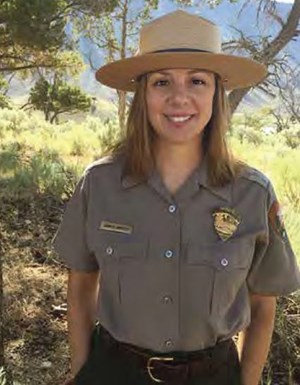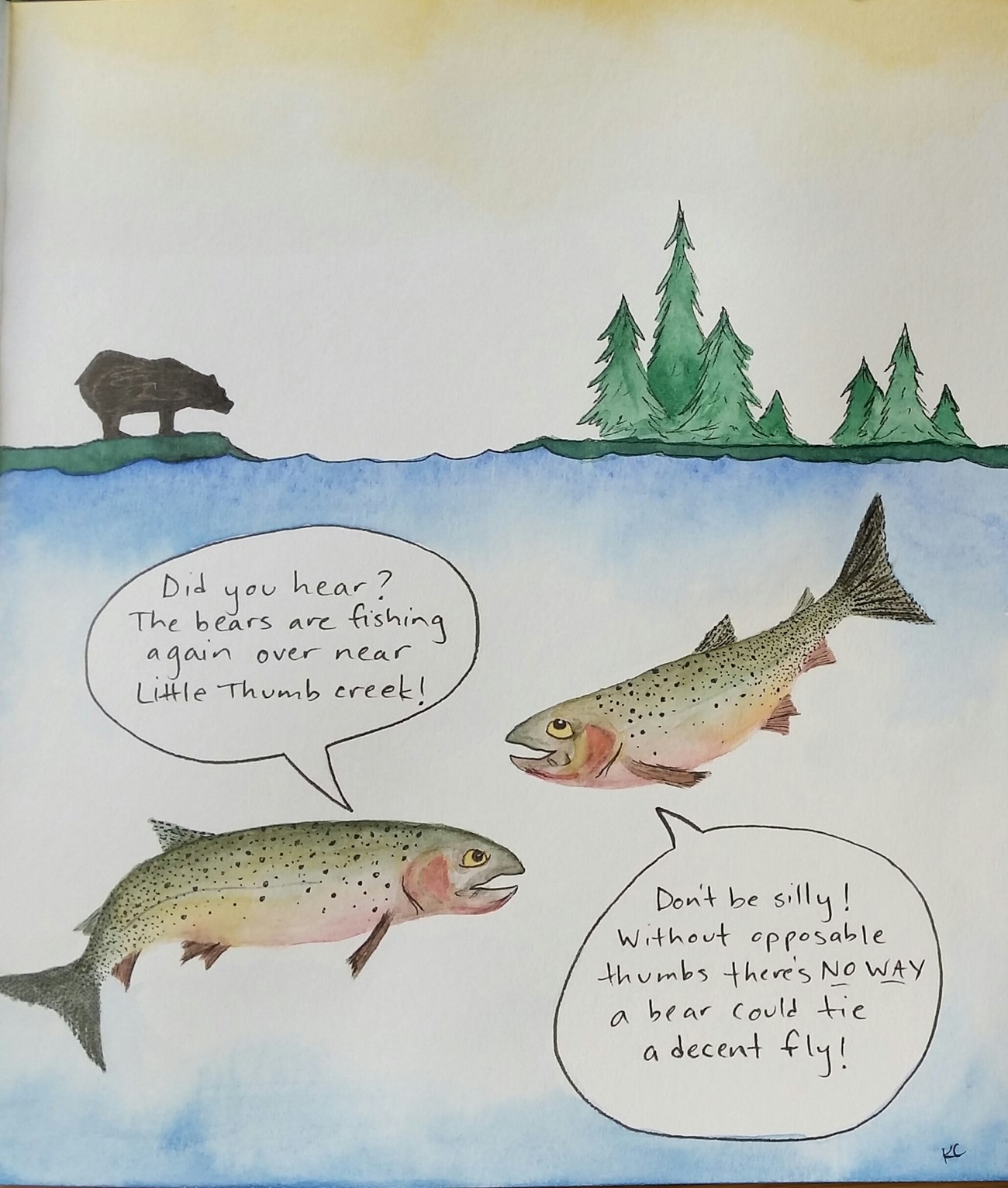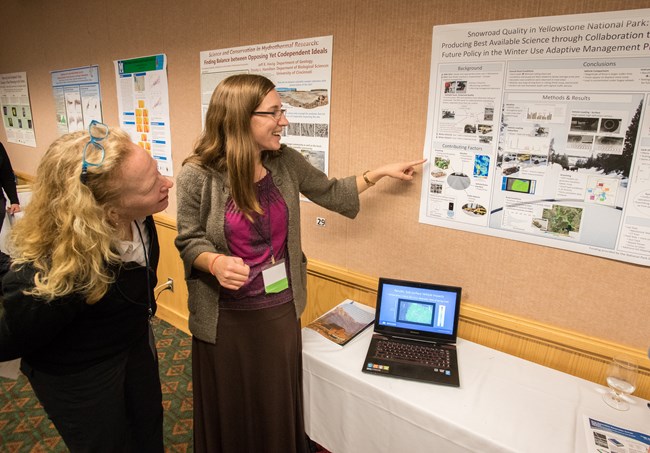Part of a series of articles titled Yellowstone Science - Volume 25 Issue 1: Native Fish Conservation.
Article
News and Notes YS-25-1
Member of University of Montana Faculty Wins Prestigious Award
Dr. Fred Allendorf, professor emeritus at the Universi-ty of Montana and member of the University’s Fish and Wildlife Genomics Group, has won the 2015 Molecular Ecology prize. This international award, bestowed an-nually by the journal Molecular Ecology, recognizes sci-entists for their significant contributions in this interdis-ciplinary field of research. Dr. Allendorf is considered one of the world’s founders of conservation genetics, and his research has dramatically advanced and direct-ed the conservation approaches of numerous taxa and ecosystems. Conservation genetics continues to be an emerging field that contributes significantly to our understanding of wildlife population health, by increasing our knowledge of genetic diversity, inbreeding, hybridization, and species fitness. Dr. Allendorf has worked shoulder-to-shoulder with other prominent University of Montana researchers (e.g., Gordon Luikart, Stephen Amish, Robb Leary, and Clint Muhlfeld) on conservation genetics research demonstrated to be vital to the Northern Rockies ecosystem. From Glacier to Yellow-stone national parks, the University of Montana Fish and Wildlife Genomics Group has shed significant light on population genetics and the recovery of key species, such as westslope cutthroat trout, Yellowstone cutthroat trout, bison, and bighorn sheep. Specifically, their work has helped us better understand the effects of hybridization on native cutthroat trout populations across much of the western United States. Their continued research on the use of different genetics methods to improve and direct applied conservation remains a formidable partner in species management and conservation both regionally and worldwide.
Dr. Fred Allendorf, professor emeritus at the Universi-ty of Montana and member of the University’s Fish and Wildlife Genomics Group, has won the 2015 Molecular Ecology prize. This international award, bestowed an-nually by the journal Molecular Ecology, recognizes sci-entists for their significant contributions in this interdis-ciplinary field of research. Dr. Allendorf is considered one of the world’s founders of conservation genetics, and his research has dramatically advanced and direct-ed the conservation approaches of numerous taxa and ecosystems. Conservation genetics continues to be an emerging field that contributes significantly to our understanding of wildlife population health, by increasing our knowledge of genetic diversity, inbreeding, hybridization, and species fitness. Dr. Allendorf has worked shoulder-to-shoulder with other prominent University of Montana researchers (e.g., Gordon Luikart, Stephen Amish, Robb Leary, and Clint Muhlfeld) on conservation genetics research demonstrated to be vital to the Northern Rockies ecosystem. From Glacier to Yellow-stone national parks, the University of Montana Fish and Wildlife Genomics Group has shed significant light on population genetics and the recovery of key species, such as westslope cutthroat trout, Yellowstone cutthroat trout, bison, and bighorn sheep. Specifically, their work has helped us better understand the effects of hybridization on native cutthroat trout populations across much of the western United States. Their continued research on the use of different genetics methods to improve and direct applied conservation remains a formidable partner in species management and conservation both regionally and worldwide.

NPS Photo - C. Reid
Jennifer Carpenter has been selected as the park’s new chief of the Yellowstone Center for Resources (YCR), selected in July 2016 after serving as the acting chief for 18 months.
As YCR Chief, Carpenter is responsible for overseeing more than 100 permanent and seasonal employees. YCR was created in 1993 and is responsible for managing all park science and resource management operations—wildlife management, aquatic resources, vegetation, cultural resources, geology and physical resources, social science, environmental compliance, science communications, and research programs. YCR works to promote scientific research within the park and integrate that research into management decisions.
Jennifer has worked in Yellowstone since 2012, where she served as the Branch Chief for Compliance and Science Communications until 2014. Prior to arriving in Yellowstone, Jennifer worked at Grand Teton National Park, Lassen Volcanic National Park, and Bandelier National Monument. Before joining the National Park Service in 2004, Jennifer worked as a biologist for several environmental consulting firms and for the Arizona Game & Fish Department. Jennifer obtained a Bachelor of Arts in Ecology and Evolutionary Biology from the University of Arizona and a Master of Science in Applied Ecology and Environmental Resources from Arizona State University.
Jennifer is a native of Colorado, although she grew up in Arizona. Jennifer lives in Mammoth, Wyoming, with her husband, Dan Kowalski, a park law enforcement ranger, and their three-year-old daughter, Estelle.

©Kira Cassidy

On October 4-6, 2016, the Biennial Scientific Conference of the Greater Yellowstone Ecosystem (GYE) gathered 345 researchers, land managers, conservations groups, and students at the Jackson Lake Lodge in Grand Teton National Park.
This year’s conference focused on deriving management lessons and applications from previous practices, recognizing trends, and anticipating future conservation needs within the GYE.
Over 100 talks and posters were presented on a range of topics, including:
•
connecting current protected areas to promote landscape-level protection
•
building public-private partnerships critical to work across political and administrative boundaries to achieve conservation goals
•
inspiring the next generation of scientists through research and citizen science opportunities
•
identifying and preserving culturally relevant sites and stories as a core part of our conservation approach
Distinguished keynote speakers and award winners joined the conference. They included Opening Keynote speaker, David Quammen; Aubrey L. Haines Award winner, Dr. Bill Wyckoff; Starker Leopold Award win-ner, Dr. Robert Gresswell; and Superintendent’s Inter-national Lecture, Dr. Gary M. Tabor.
The Conference featured field trips for the first time. Natural History participants learned about resource management issues related to warm spring illegal aquarium dumping, native restoration efforts to revegetate 4,500 acres by Kelly Hayfield, century scale vegetation change fire effects, and pronghorn migration.
Cultural history attendees toured the National Historic Landmark Jackson Lake Lodge, Colter Bay Museum, the historic AMK Ranch, and concluded with a short skills session on creating and fostering a culture of resource stewardship in parks.
Over 50 students, many of whom were granted scholarships, added their perspectives to the future.
This important event will continue to rotate throughout the GYE for future conferences and continue to bring together those who work to conserve the GYE in the coming century.“Attending the conference gave me hope for the future of our planet when I saw so many scientists contributing to our knowledge of ecosystem dynamics, and climate change. It was good to see so many people working together to solve problems and to come up with real life solutions.” –Danielle Beazer, Great Basin College.
Last updated: August 2, 2017
